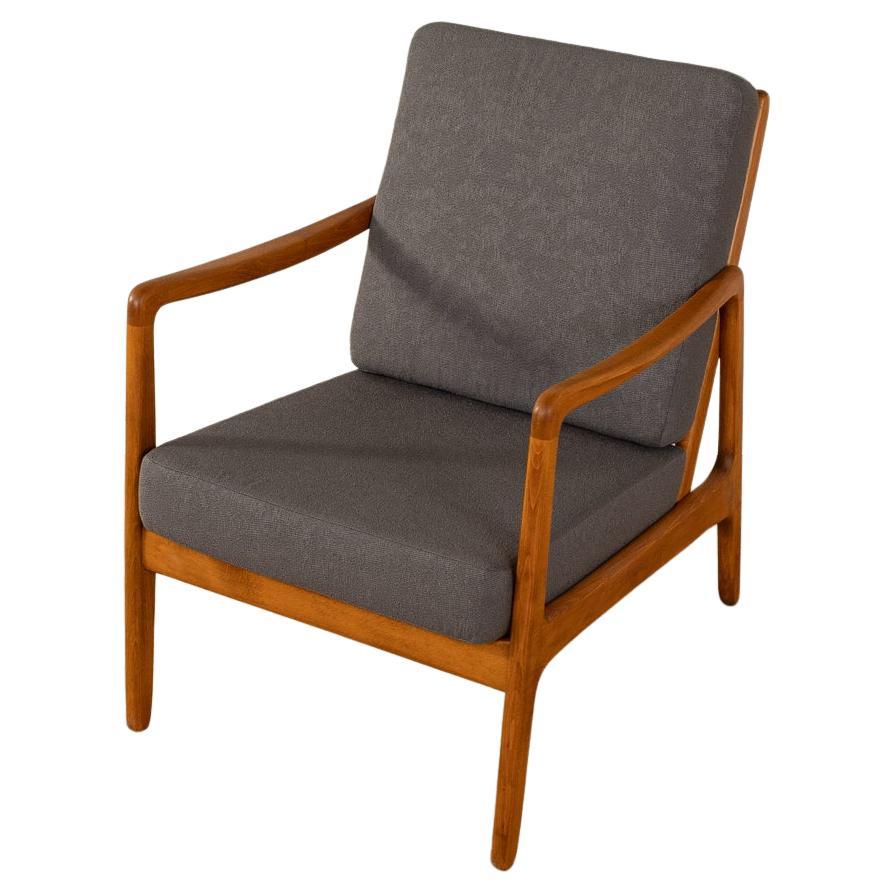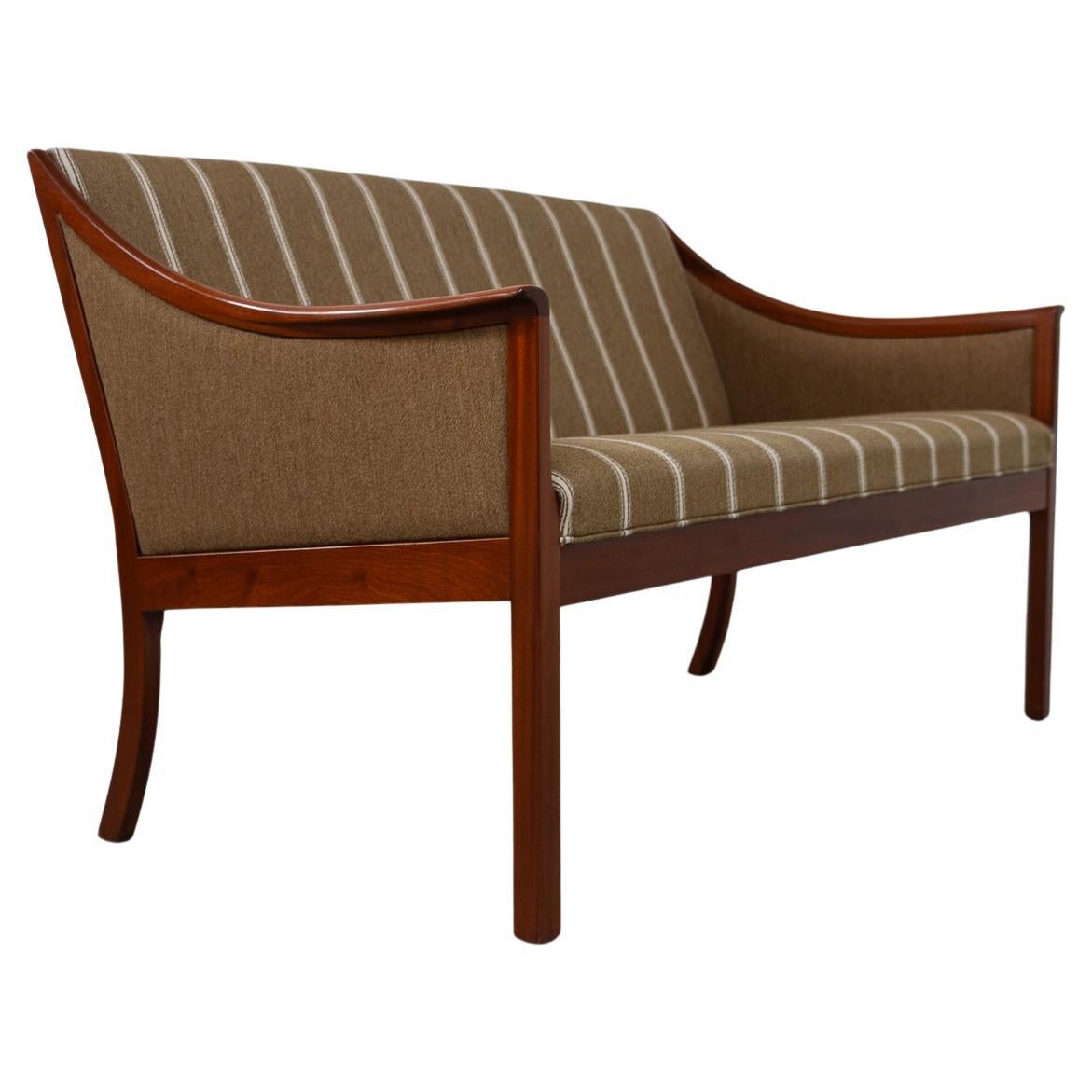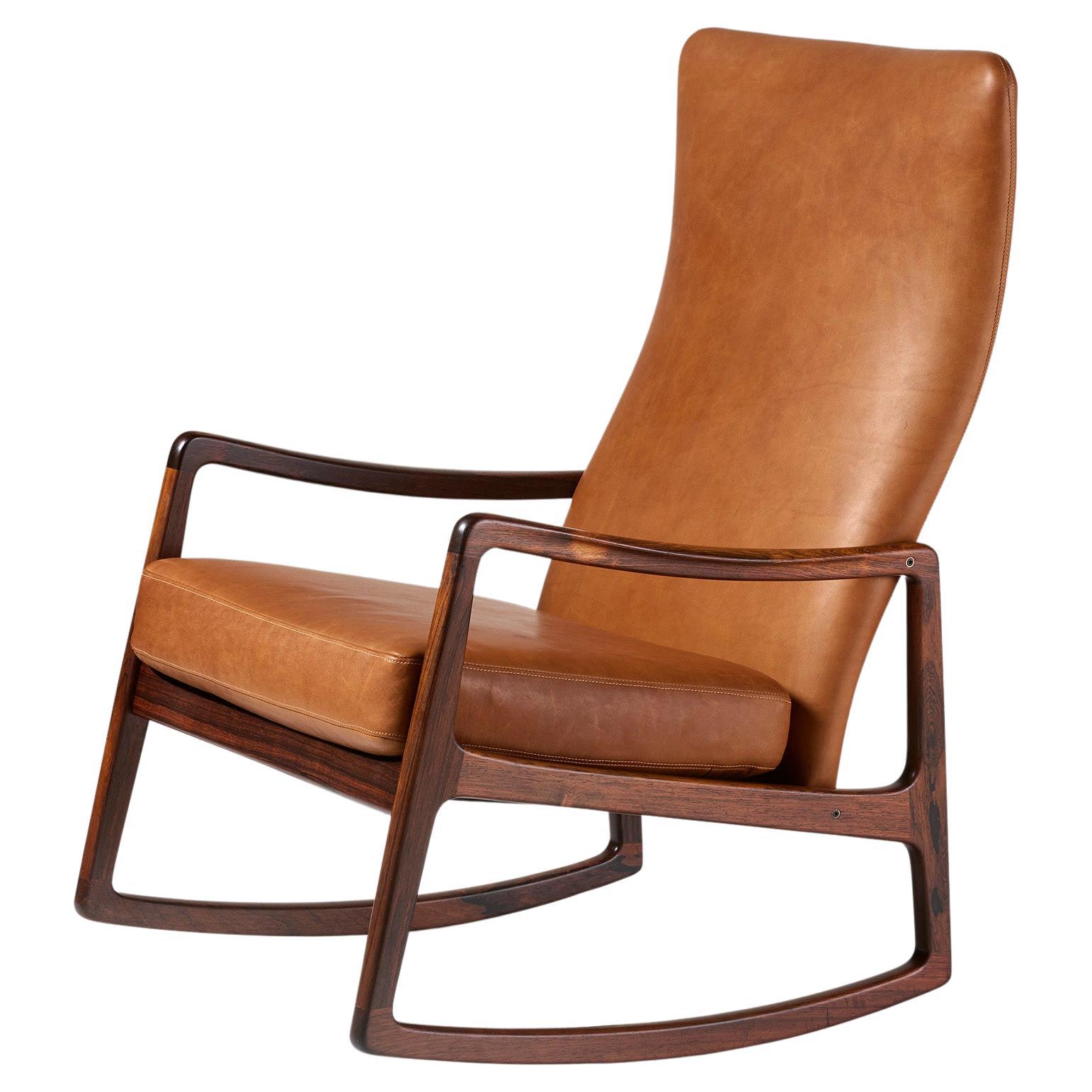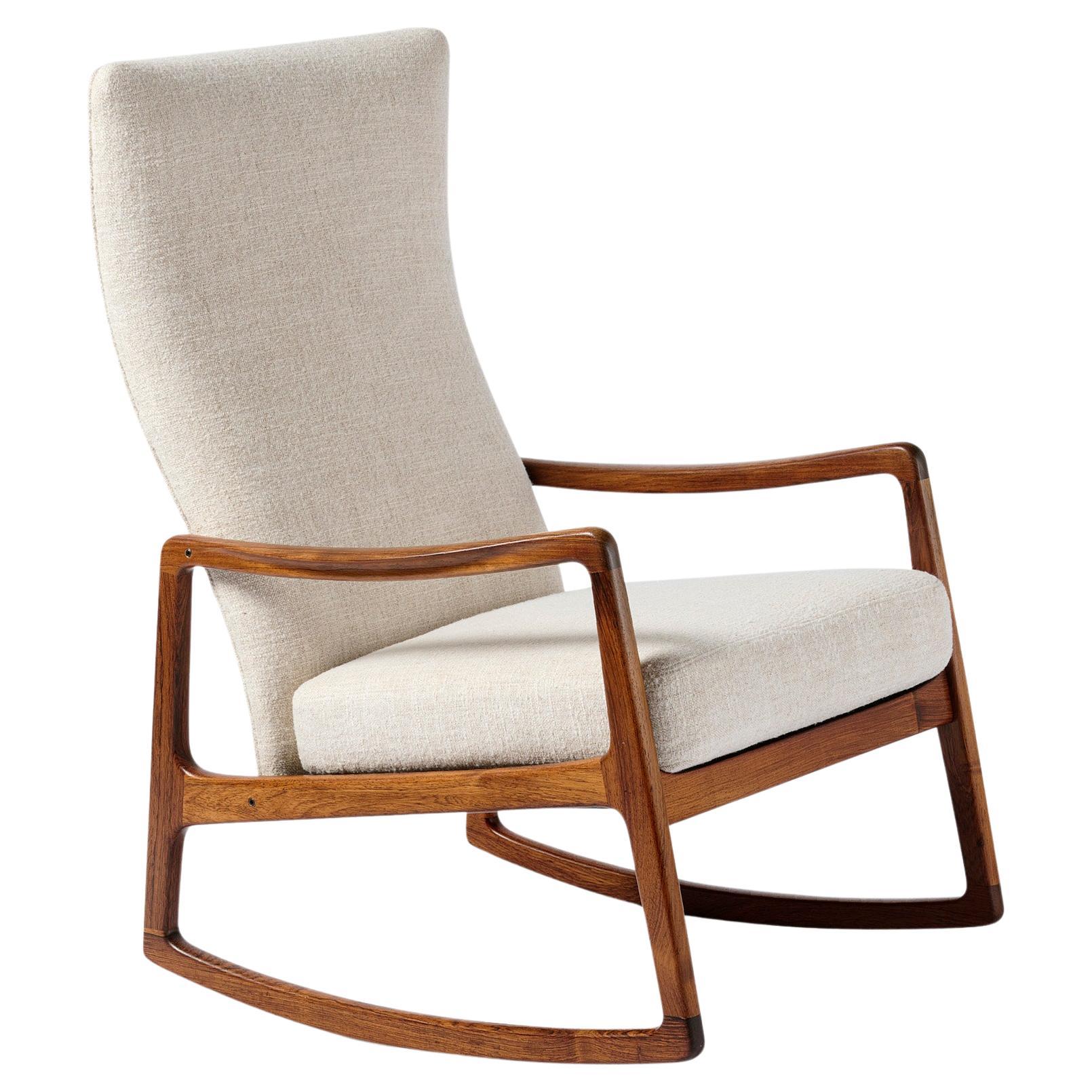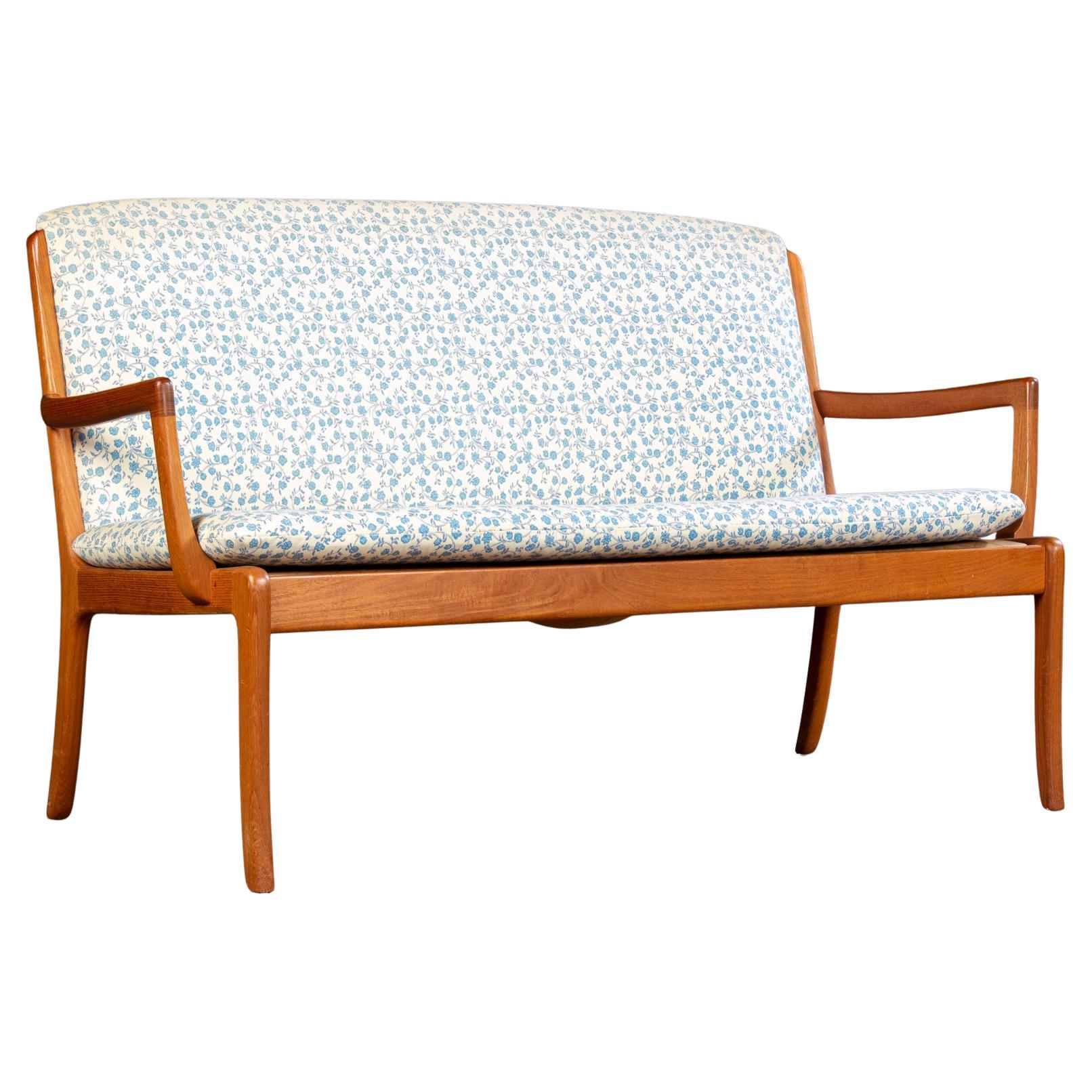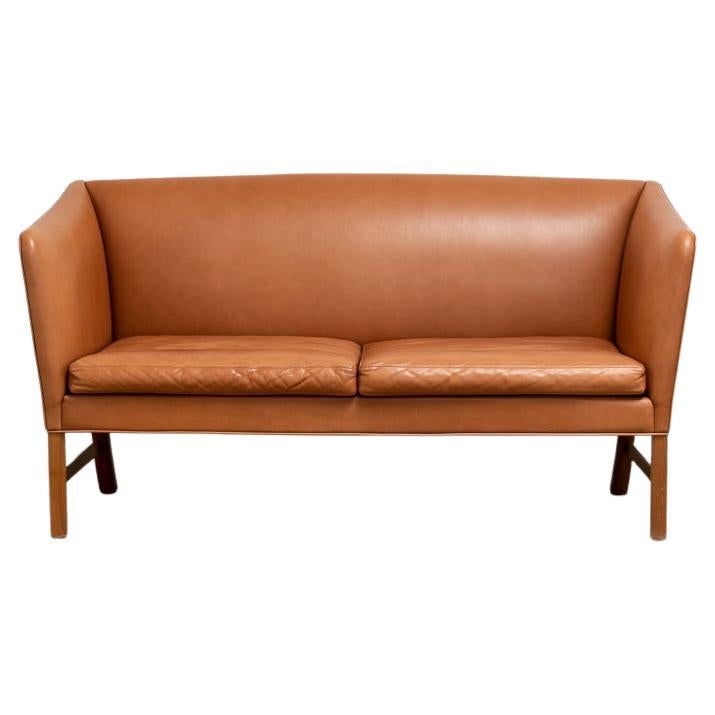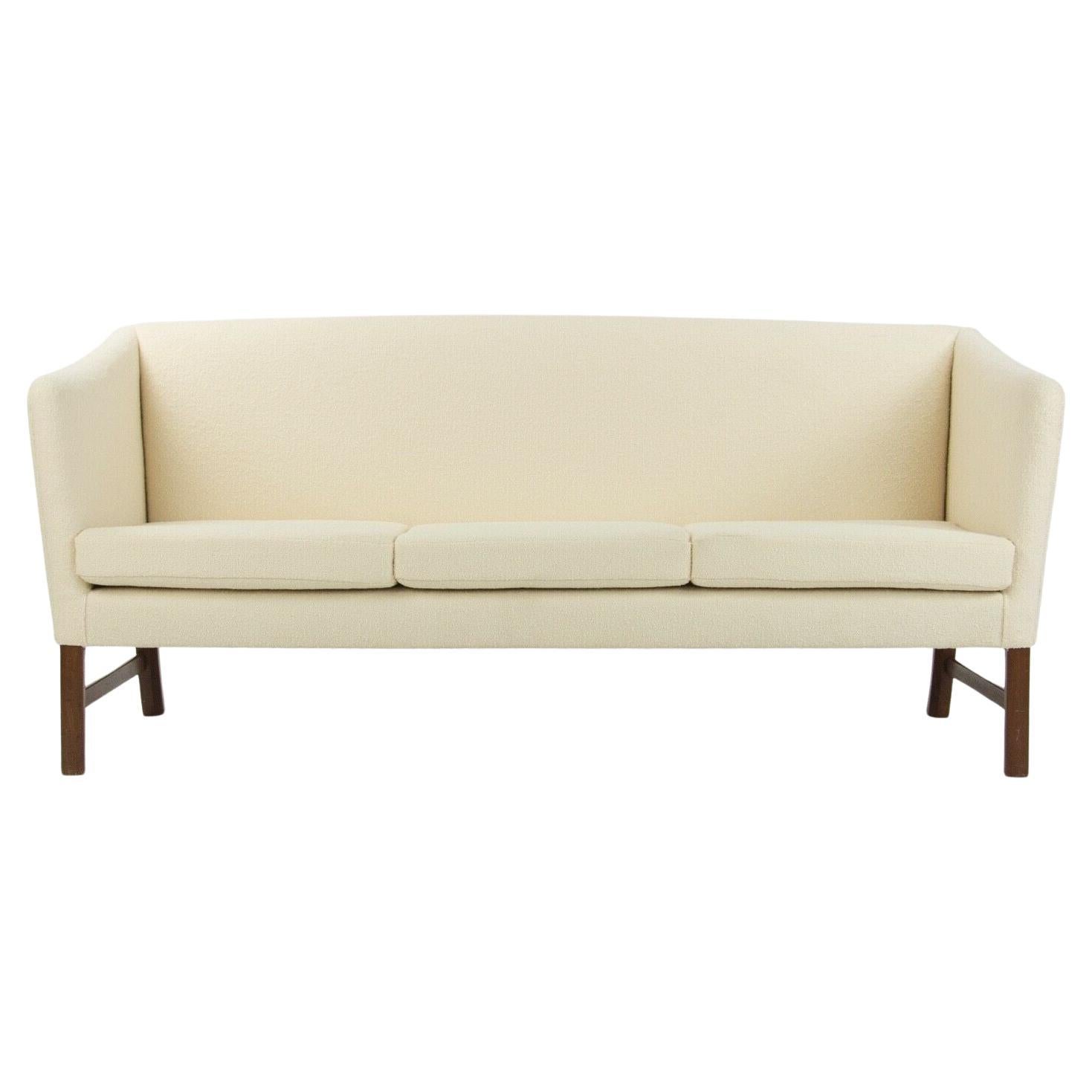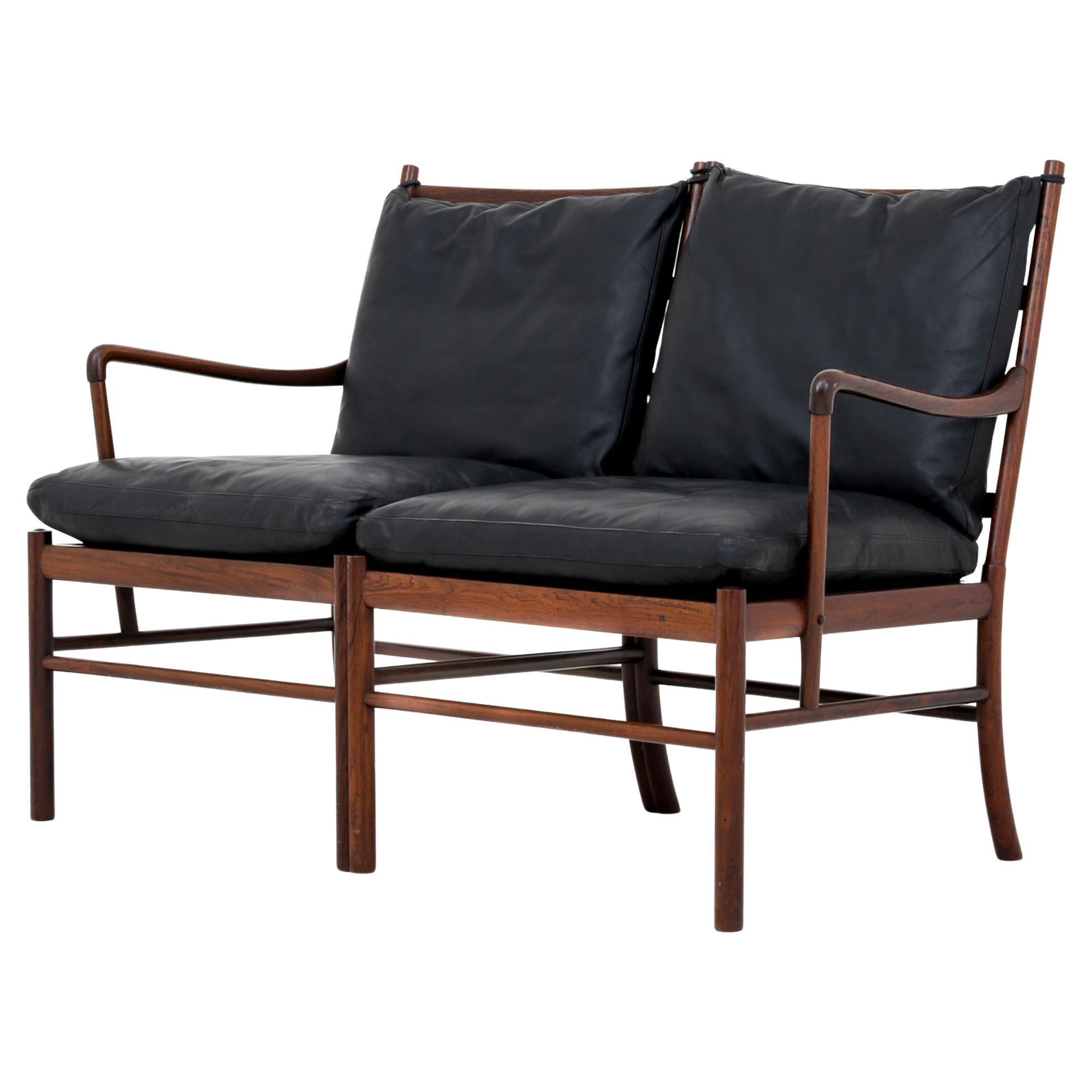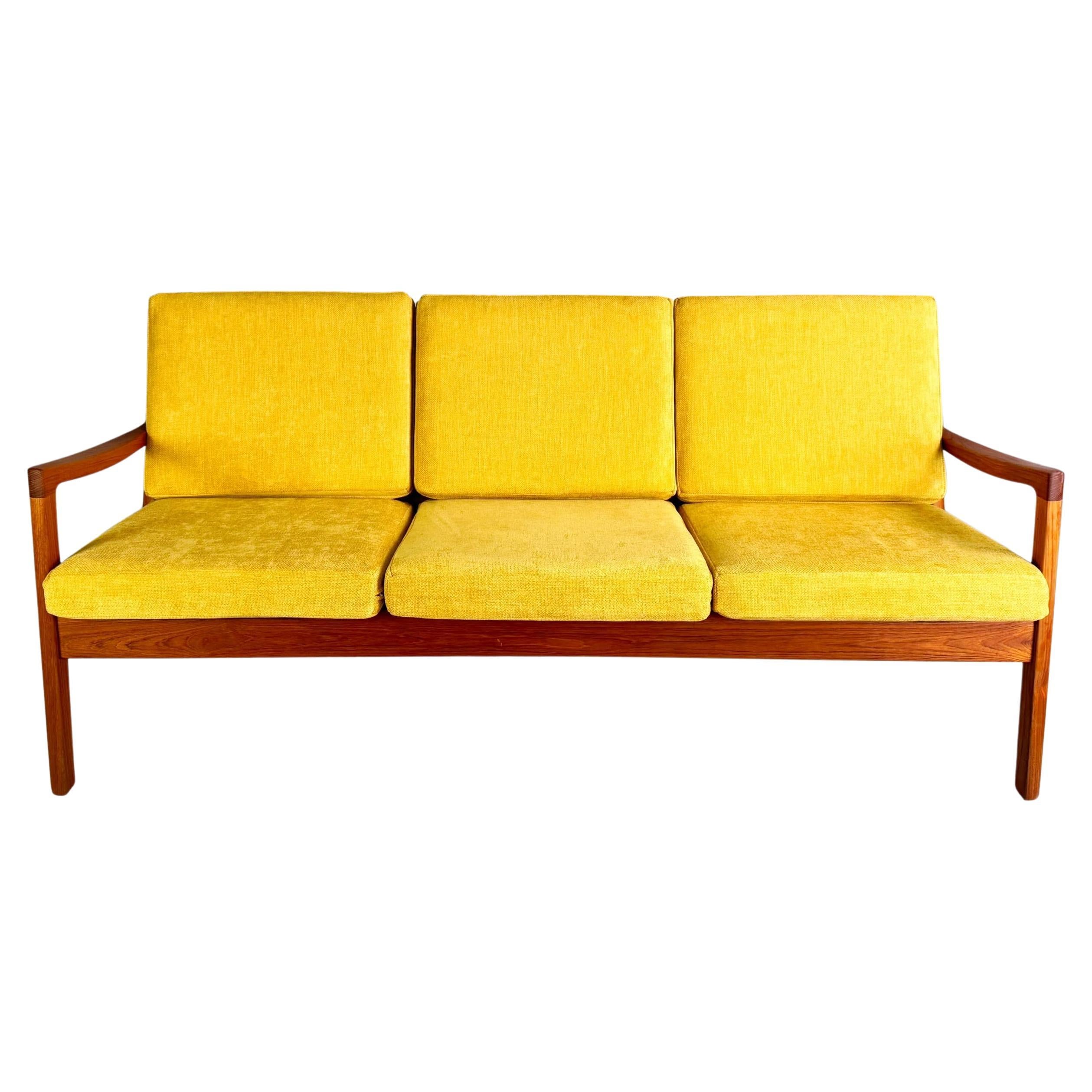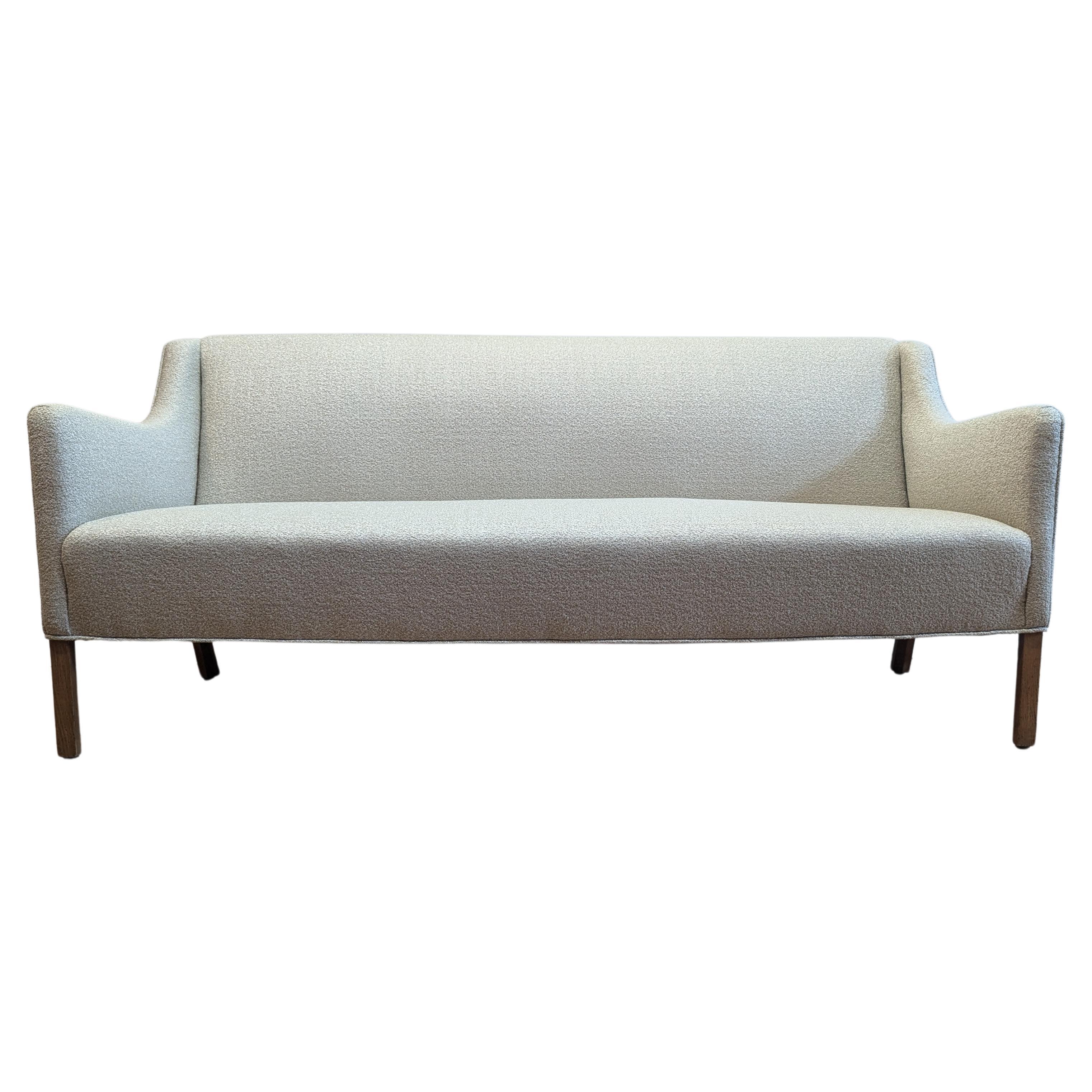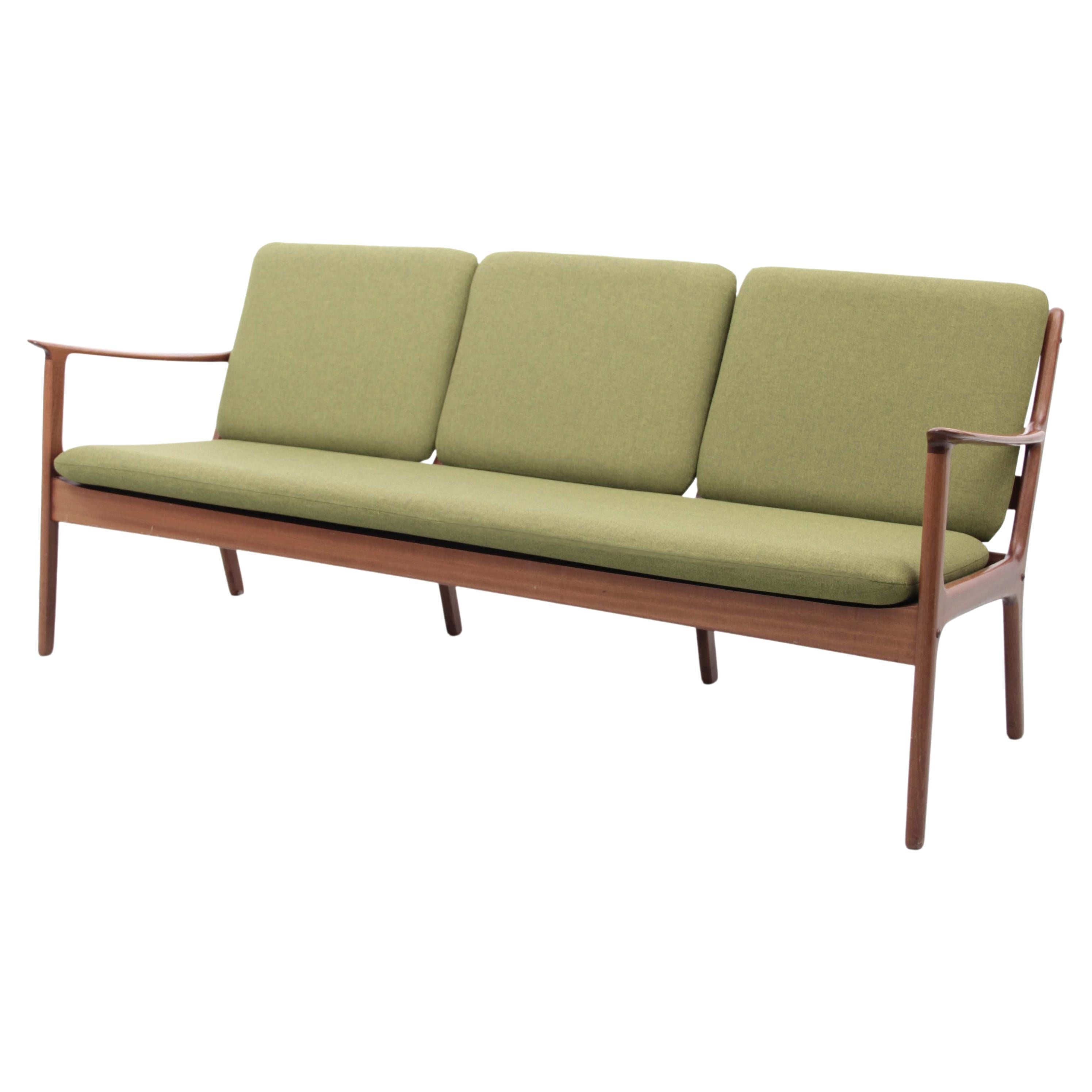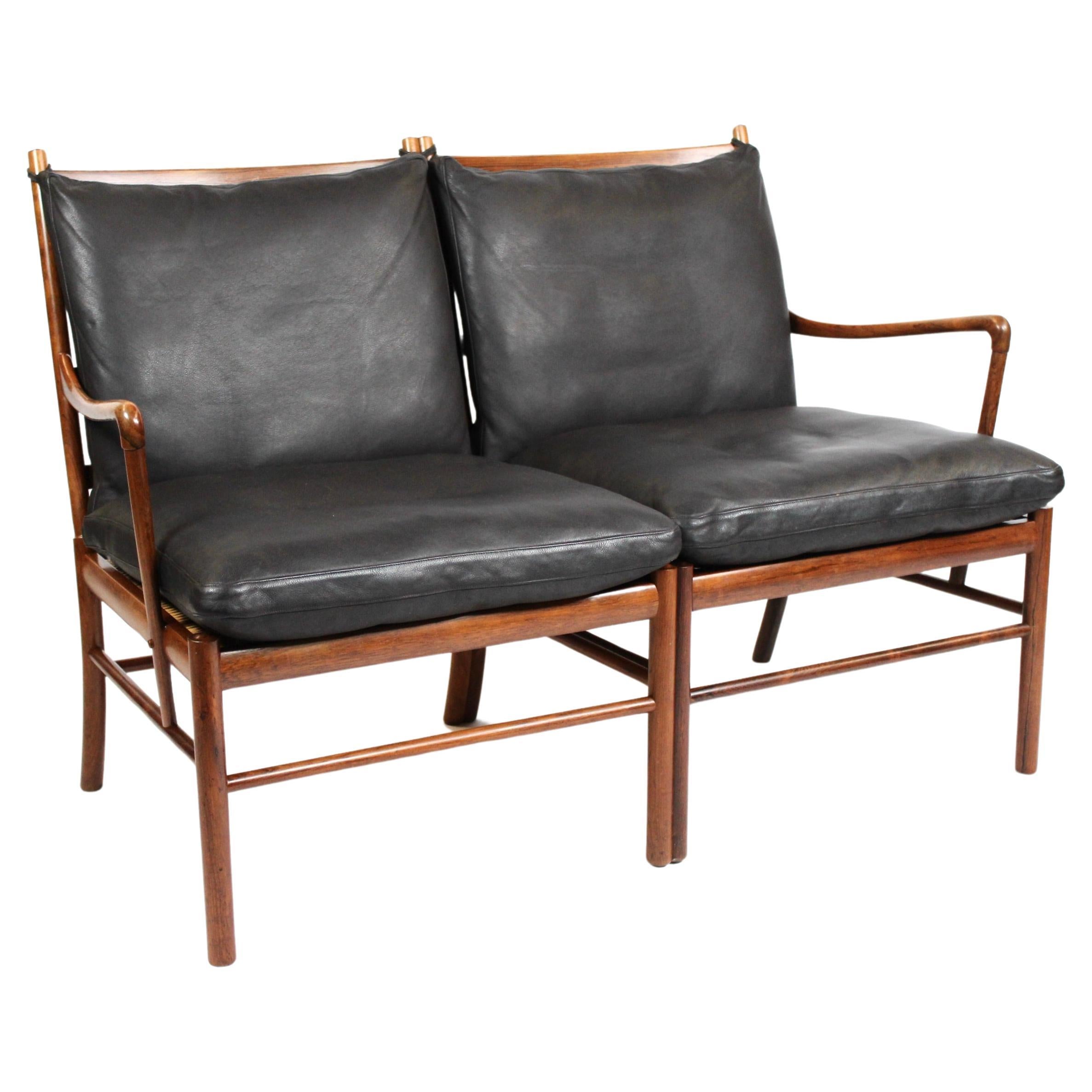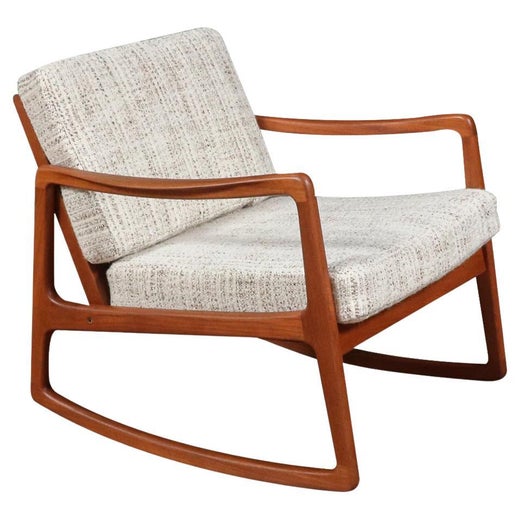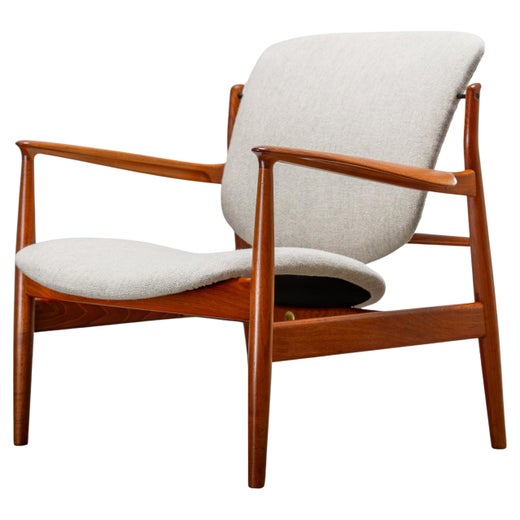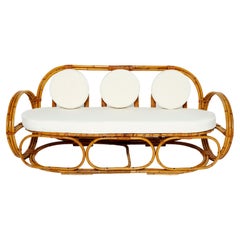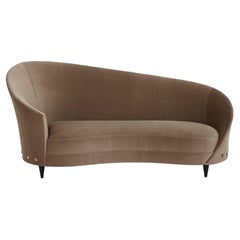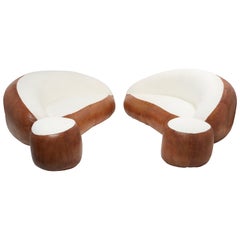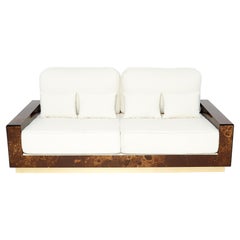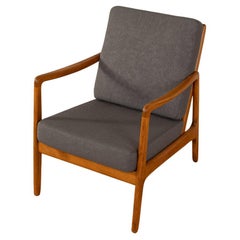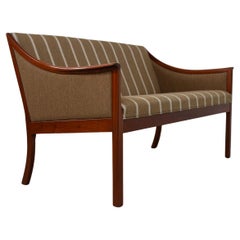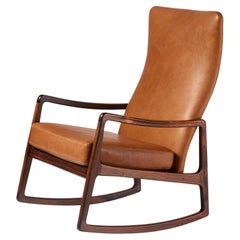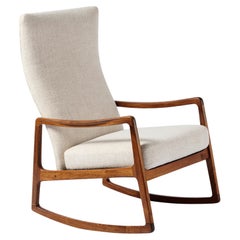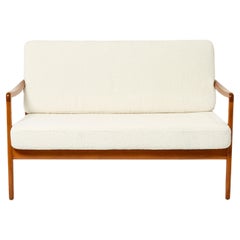
Scandinavian Sofa by Ole Wanscher FD 109 Wool Bouclé, 1960s
View Similar Items
Scandinavian Sofa by Ole Wanscher FD 109 Wool Bouclé, 1960s
About the Item
- Creator:France & Daverkosen (Cabinetmaker),Ole Wanscher (Designer)
- Dimensions:Height: 32.29 in (82 cm)Width: 51.97 in (132 cm)Depth: 29.14 in (74 cm)Seat Height: 17.72 in (45 cm)
- Style:Mid-Century Modern (Of the Period)
- Materials and Techniques:
- Place of Origin:
- Period:
- Date of Manufacture:1960
- Condition:Reupholstered. Wear consistent with age and use.
- Seller Location:Paris, FR
- Reference Number:1stDibs: LU3020329813242
Ole Wanscher
A scholar and architect with the heart of an artist, Ole Wanscher helped define the functional, clean-cut style that formed the core of modern Danish furniture design. Influenced heavily by his world travels, Wanscher gained inspiration from English, Asian, Egyptian and traditional Shaker furniture, and he incorporated elements from these styles into his revered mid-century designs.
Wanscher’s deep respect for the use of traditional materials such as quality wood is reflected in his work, which is valued for being both beautiful and built to last. He was also a leader in the postwar “design for everyone” movement, creating many pieces intended for everyday life within the small confines of the average Danish household. Later, Wanscher became a prolific writer on the subject of furniture design. He is considered one of the most significant influences on the world of Scandinavian modernism.
The son of an art historian and a painter, Wanscher studied at the Royal Danish Academy of Fine Arts. From 1925 to 1927, Wanscher worked under the great Danish designer and professor Kaare Klint, who became one of the greatest stylistic influences on his output. Wanscher would go on to work as a professor at the academy from 1955 to 1973.
Wanscher founded his own furniture manufacturing company in 1929. Here he employed the top cabinetmakers of the day, most notably A.J. Iversen, with whom Wanscher collaborated for many years. While the workshop produced seductive handmade furniture with organic materials such as teak and mahogany, Wanscher intended to design durable seating, tables and more for the mass market — he was committed to making quality furniture available to a wider audience.
Of all of Wanscher’s designs, he is perhaps best known for his Colonial chair. This piece — which is part of a collection for Danish manufacturer P. Jeppesens that includes a sofa and a coffee table — exemplifies his penchant for combining minimalist design with traditional craftsmanship. Wanscher’s dining room tables, such as the Rungstedlund table, also epitomize the elegance of his work’s simple silhouettes and careful construction. These sleek tables serve as an ideal centerpiece for both modern and traditionally styled dining rooms, highlighting the versatility of Wanscher’s work.
Wanscher received a gold medal for his exemplary work at the 1960 Milan Triennale. He also received the Copenhagen Carpenters’ Guild Annual Award. Though Wanscher passed away in 1985, his iconic designs and scholarly writings remain relevant to this day.
Find vintage Ole Wanscher tables, seating and case pieces on 1stDibs.
France & Daverkosen
The giant of mid-century furniture design France & Søn began its remarkable journey as a Danish firm specializing in the production and exporting of Scandinavian design called France & Daverkosen.
British businessman Charles William Fearnley France and Danish cabinetmaker Eric Daverkosen entered into a joint venture in 1936 — France being the investor and Daverkosen the head designer for their small mattress factory. Soon after production started at the France & Daverkosen company, Daverkosen became quite ill.
Concerned for his friend and their fledgling business, France traveled to Denmark, and Daverkosen died soon after his partner arrived. While France was attempting to make arrangements to transfer the company into his hands, World War II erupted, and Germany invaded Denmark. As a British citizen, France was captured and sent to a prison camp in Germany.
While in captivity, France developed several manufacturing ideas to pass the time and to keep his mind focused. He imagined a way to create lightweight wooden chairs that could be manufactured on an industrial scale and transported using an economic flat-pack format. He also thought of a way to retool his mattress factory to create chair backs, seats and sofa cushions.
Once freed, France returned to his business in Denmark and began to manufacture beech and teak goods that were gaining widespread acclaim around the world. He began to surround himself with some of the best Scandinavian designers of the time: Finn Juhl, Grete Jalk and Ole Wanscher, to name a few.
By 1954, France & Daverkosen accounted for 60 percent of all Danish furniture exports and their factory employed 350 people. Charles’s son James joined the company in 1957, which resulted in the name change to France & Søn.
Later, France & Søn was acquired by Danish designer Poul Cadovius, who folded it into the operations at CADO, a company he founded during the 1950s.
On 1stDibs, find France & Daverkosen seating, tables and more.
More From This Seller
View AllVintage 1960s Italian Mid-Century Modern Sofas
Wool, Bamboo
Vintage 1960s Italian Mid-Century Modern Sofas
Velvet
Vintage 1970s French Mid-Century Modern Sofas
Leather, Bouclé
Vintage 1970s French Mid-Century Modern Sofas
Brass
Vintage 1970s Italian Mid-Century Modern Sofas
Brass
Vintage 1970s French Mid-Century Modern Sofas
Velvet
You May Also Like
Vintage 1950s Danish Mid-Century Modern Armchairs
Beech, Teak
Vintage 1960s Danish Mid-Century Modern Sofas
Wool, Mahogany
Vintage 1960s Danish Scandinavian Modern Lounge Chairs
Rosewood, Leather
Vintage 1960s Danish Scandinavian Modern Lounge Chairs
Leather, Rosewood
Vintage 1960s Danish Scandinavian Modern Sofas
Teak
Vintage 1960s Danish Sofas
Leather, Mahogany
